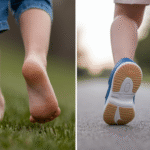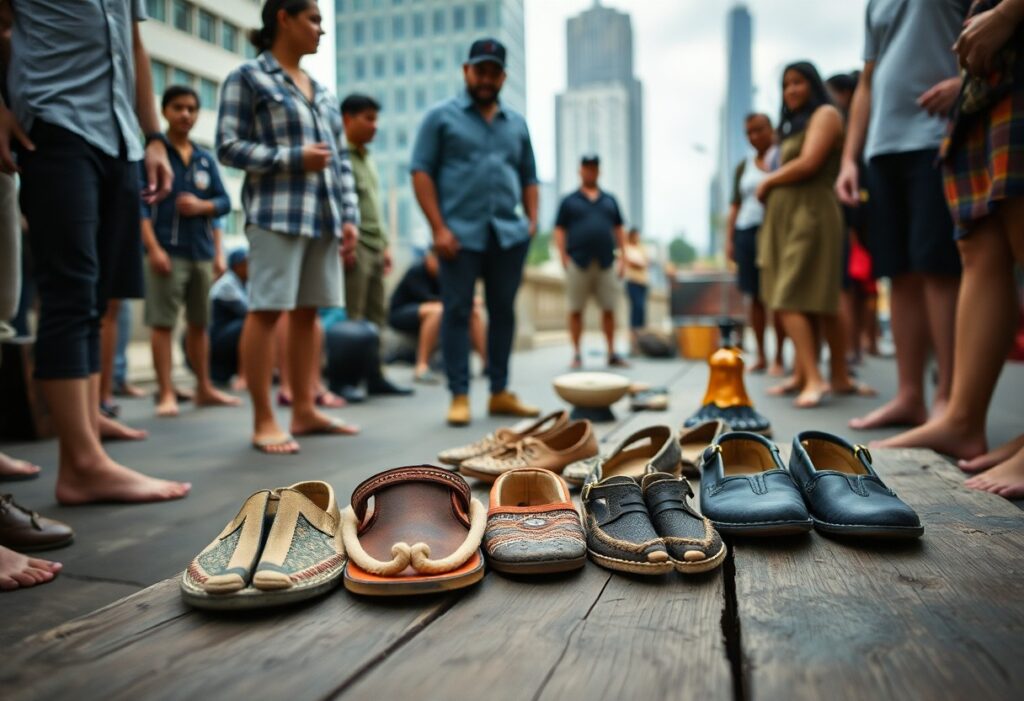
Diving into the realm of barefoot footwear through the lens of cultural anthropology unveils captivating narratives that intricately link the time-honoured traditions of Aboriginal cultures with the dynamics of contemporary urban life. As you delve into this enchanting evolution, you will uncover how cultural beliefs and practices surrounding minimalist footwear shape our perceptions of comfort, our deep-seated connections to nature, and avenues for personal expression. Gaining insight into these themes not only enriches your understanding but also prompts a reassessment of how the footwear choices you make can embody significant cultural significance and reflect your personal identity.
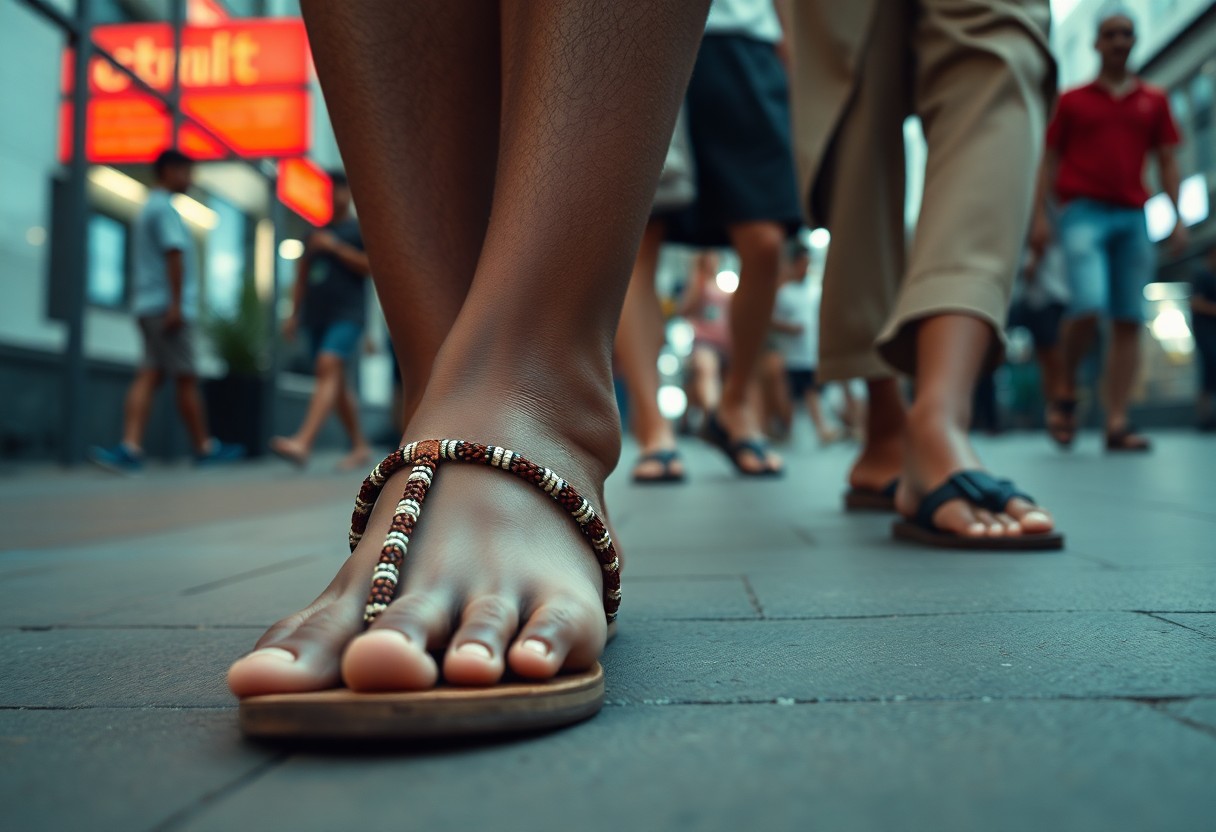
Unifying Ancient Footwear Traditions with Modern Innovations in Design
The contemporary footwear industry presents a vibrant mosaic that weaves together ancient traditions with state-of-the-art innovations, fostering a burgeoning appreciation for barefoot footwear. This journey not only pays tribute to <a href="https://limitsofstrategy.com/herbal-tincture-formulations-the-complete-guide-to-advanced-techniques/">traditional indigenous techniques</a> but also adapts them to seamlessly integrate with your modern lifestyle. By recognising the importance of historical practices, you can unveil an exciting fusion of cultural respect and practical aesthetics in your daily footwear selections, thereby enhancing your personal style while honouring the legacies of the past.
Comparing Indigenous Foot Conditioning Techniques with Contemporary Practices
Across diverse global indigenous cultures, unique conditioning techniques have been employed to fortify feet for various terrains. Practices such as walking barefoot over different surfaces have effectively strengthened the arches and muscles in ways that many modern interpretations struggle to replicate. While contemporary minimalist footwear may strive to emulate these effects, they often fall short of delivering the authentic experience of genuine contact with the earth, which is essential for cultivating natural foot strength and flexibility. Engaging with these traditional practices provides a holistic understanding of foot health that current designs frequently overlook, enabling a deeper appreciation for the benefits of natural movement.
Exploring the Historical Journey of Military Footwear: From Ancient Caligae to Modern Tactical Boots
The narrative of military footwear is an engaging tale of adaptation and innovation, evolving from the robust Roman caligae, designed for durability and traction, to today’s tactical boots that seamlessly blend protection with agility and comfort. An in-depth examination of these transitions reveals a consistent theme: in challenging environments, functionality is paramount, necessitating gear that enhances soldiers’ endurance and mobility.
The Roman caligae were crafted from resilient leather featuring an open-toe design, providing breathability and durability. These ancient shoes boasted thick soles that effectively absorbed shock and offered essential traction in combat scenarios. Fast forward to the present, and tactical boots are constructed using advanced materials such as Kevlar and waterproof membranes, significantly boosting durability and performance. These modern designs incorporate padded collars and advanced cushioning systems, significantly reducing the risk of injuries during demanding military operations. Appreciating the legacy of military footwear sheds light on how these historical models have paved the way for contemporary innovations, merging heritage, practicality, and cutting-edge technology to meet the evolving needs of today’s warriors.
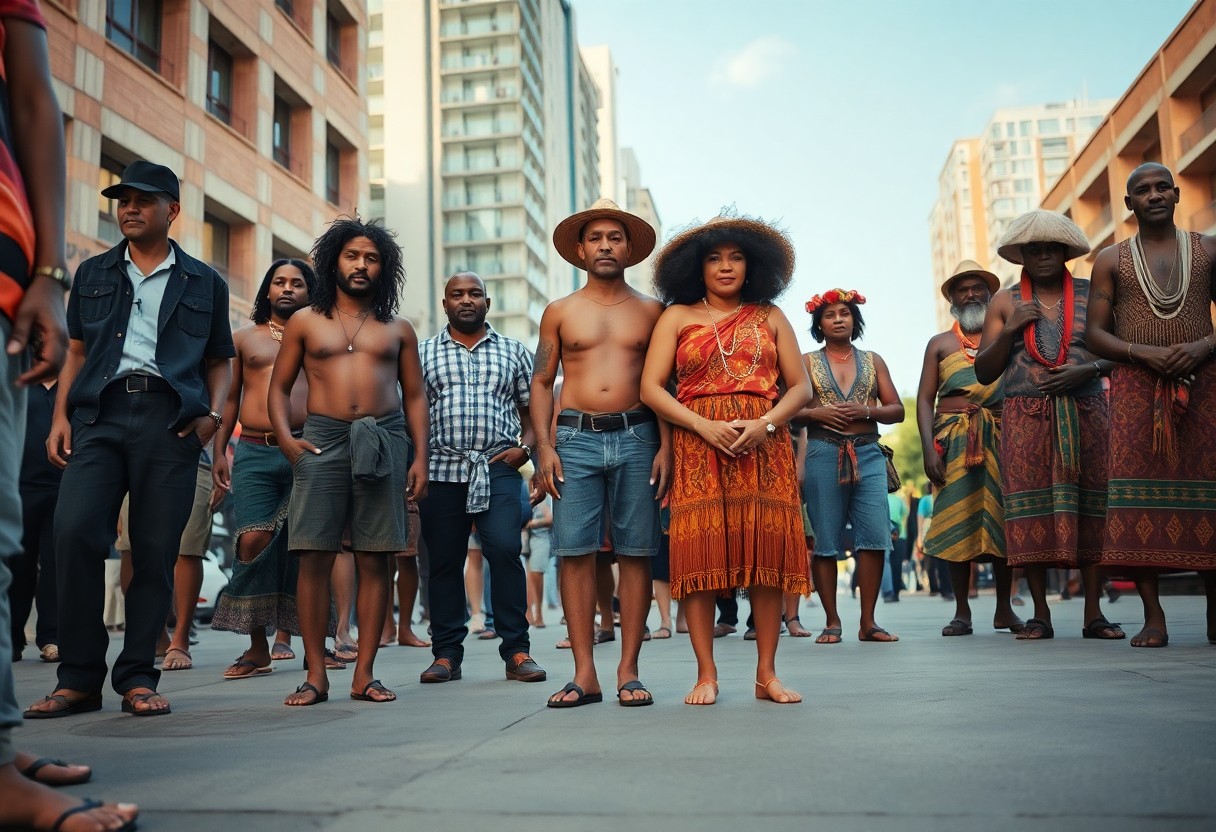
Understanding the Cultural Footwear Divide: Insights from Urban and Rural Perspectives
The contrasting footwear choices made in urban versus rural contexts unveil significant cultural and practical differences. In urban environments, style and brand identity often take precedence, while rural settings tend to emphasise practicality and durability. As barefoot footwear gains traction, urban dwellers are increasingly adopting its minimalist design as both a fashion statement and a pathway to perceived health benefits. Conversely, individuals in rural areas may exhibit hesitance, influenced by traditional values and the practical demands of their surroundings, leading to divergent footwear trends across these contexts.
Identifying Emerging Patterns in Urban Adoption of Barefoot Footwear
Within urban landscapes, a significant shift towards embracing barefoot footwear is taking shape, with adoption rates steadily rising over the last decade. This trend is propelled by multiple factors, including heightened health awareness, an increasing interest in natural movement, and the influence of popular fitness trends like yoga and running. Recent surveys indicate that approximately 35% of urban residents have actively sought out barefoot-style shoes, illustrating a cultural transformation towards embracing innovative body mechanics and enhancing overall well-being.
Exploring Gender-Based Influences on Barefoot Footwear Adoption: Who is Leading the Charge?
Gender dynamics significantly impact the acceptance of barefoot footwear, as distinct motivations drive the choices of men and women. Women frequently encounter greater societal pressures regarding fashion and aesthetics, which can hinder their willingness to embrace minimalist styles. Conversely, men may be more motivated by the performance and health benefits associated with these shoes, resulting in higher adoption rates among male consumers.
A deeper examination of the gendered aspects of barefoot footwear adoption reveals that societal expectations profoundly shape women’s decisions. Women often navigate a landscape where ideals of beauty and fashion overshadow practical health advantages. Research suggests that approximately 45% of men in urban settings show a preference for barefoot shoes, compared to only 30% of women. Female consumers frequently grapple with balancing aesthetics and functionality, leading to a more cautious evaluation of barefoot footwear designs against their desire for comfort and support. By empowering women through targeted awareness campaigns and showcasing fashionable barefoot options, the willingness to engage with this trend could rise, potentially reshaping urban footwear narratives and promoting inclusivity across genders.
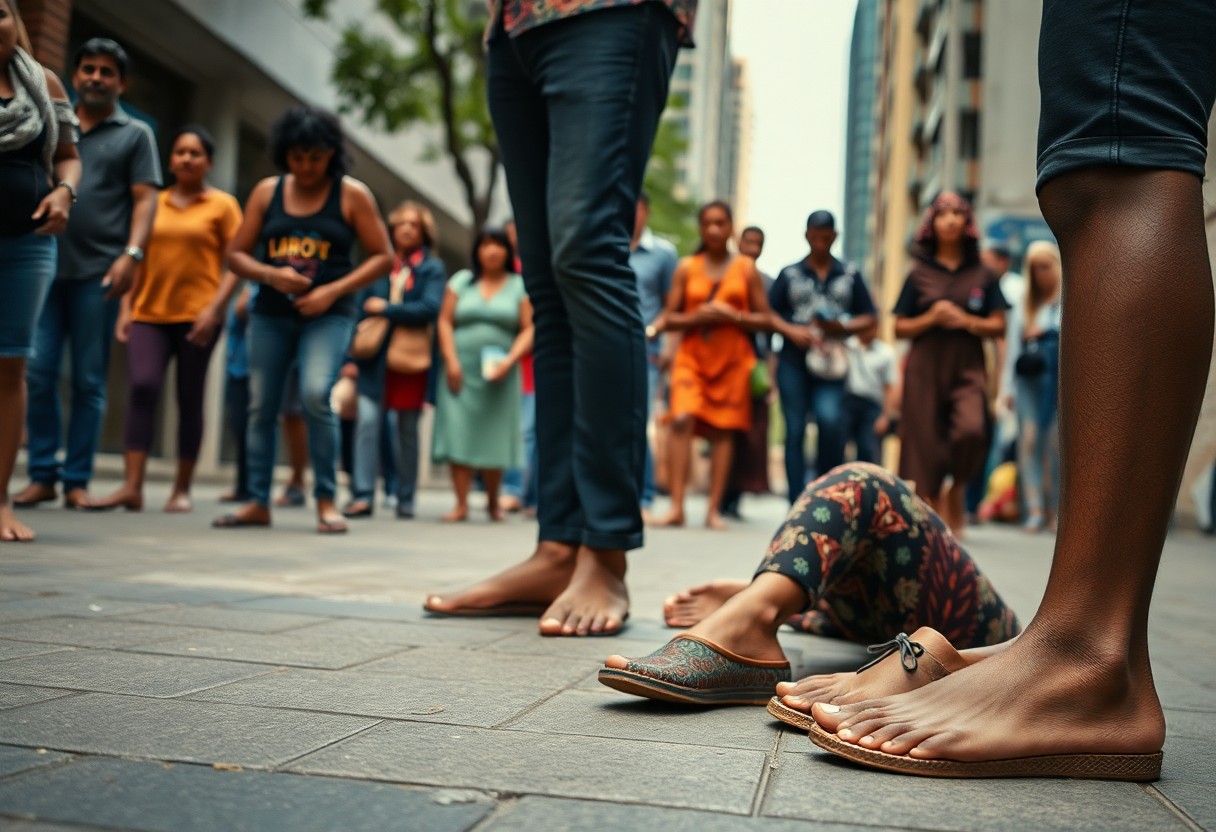
Pioneering Technologies Shaping the Future of Barefoot Footwear
As the demand for barefoot footwear continues to surge, groundbreaking technologies are poised to transform your approach to comfort and performance. Advances in materials science and personalised fitting techniques will not only enhance functionality but also tailor your walking experience, merging traditional wisdom with contemporary design principles. We are entering an era where your footwear becomes as unique as the journey it accompanies, leading to enhanced comfort and performance.
Utilising 3D Scanning Technology for Optimal Fit
The advent of 3D scanning technology is revolutionising the way barefoot footwear is customised, enabling a precise fit that conforms to your unique foot shape. Rather than settling for generic sizes, your shoes can be intricately designed to align with the contours of your feet, significantly enhancing comfort while minimising the risk of injury. The availability of custom-fit options not only elevates your walking experience but also makes barefoot shoes accessible for individuals with diverse foot shapes and sizes.
Integrating Smart Sensors: The Future of Footwear Technology
The incorporation of smart sensors into barefoot footwear is set to redefine the industry by embedding technology directly into the soles. These innovative features can monitor various metrics, from distance travelled to foot pressure, providing you with invaluable insights to optimise your walking or running habits. Equipped with real-time data, you can adjust your activities to enhance performance and safeguard your well-being.
Picture having access to real-time analytics as you walk or run. Smart sensors can track your gait, alerting you to any irregularities that could lead to injury. Some forward-thinking brands are already developing footwear capable of analysing your foot's impact on different terrains, offering personalised recommendations for style or cushioning adjustments on the fly. This groundbreaking integration fuses smart technology with the traditional barefoot philosophy, ensuring you maintain a natural stride while leveraging the latest advancements in wearable tech. The potential to enhance sports performance, aid rehabilitation, and improve everyday comfort is limitless, fundamentally reshaping how you interact with your surroundings with every step.
Reflecting on the Rich Evolution of Barefoot Footwear
Your exploration of the cultural anthropology surrounding barefoot footwear uncovers a wealth of narratives woven from the threads of Aboriginal traditions to modern urban practices. By embracing the principles of natural movement and fostering a connection to the earth, you gain valuable insights into how this footwear philosophy transcends mere fashion, profoundly influencing lifestyle choices and community values. As you contemplate these diverse perspectives, consider how your footwear choices can embody and promote a deeper understanding of cultural heritage and adaptability in the contemporary world.
The Article Cultural Anthropology of Barefoot Footwear: From Aboriginal Traditions to Modern Urban Adoption appeared first on My Shoes Finder
The Article Cultural Anthropology of Barefoot Footwear: Traditions to Today Was Found On https://limitsofstrategy.com
The Article Cultural Anthropology of Barefoot Footwear Through the Ages found first on https://electroquench.com


